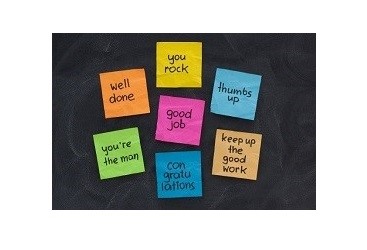Creative Respect: Earn It, Don't Expect It

Over my career, I’ve had many conversations with in-house creative colleagues related to getting respect from clients. Actually, I had one last week. Common refrains include, “They just don’t get it” or “They don’t understand design” and my personal favorite, “They’re art directing me!” So, how do we get the respect that we think we deserve?
Leave creative behind (for now). First and foremost, learn your client’s business inside and out. This will most likely involve building a stronger relationship with Account Management. Immerse yourself in the client’s world and learn—learn about the products, learn about the target audience, learn about customers’ buying behaviors, and learn about past marketing successes and failures. The goal is to gain a level of understanding that enables you to speak intelligently and strategically about your creative solutions in the context of the business. I have found that this significantly improves relationships and the potential for collaboration, plus it brings a level of respect for you as the writer or designer. It can also shift the conversation from being about your work to being about how to meet the business goals in a way that resonates with the audience.
Eradicate subjective opinions. Creativity is what everybody wants, but most don’t really know what it means or how to articulate it. This leaves the door open for you. If you know your client’s business, the sky is the limit when it comes to creativity. The goal is to develop creative solutions that meet your client’s business goals and/or solve their business problems. It’s this business context that gives you the freedom to create and garner the respect you deserve. This will eliminate subjective opinions because every design or copy decision you make can be traced back to the business. Now your conversation can be one where you are collaborating with your client to select and fine-tune your creative solution.
Presentation matters. Take all that you know about the business plus your design/copy expertise and package it up in a smart, strategic way with the creative solution you are presenting being last in line. Tell a story that’s anchored in the business. One of the biggest mistakes I see is creative people leading with their work. It usually begins with, “So, here is design option one…” followed by the subjective opinion ready to pounce on you. Instead, start by building a business case and effectively positioning your creative work for success by presenting it as the solution.
We’re exploring Creativity this month at IHAF. Join us by sharing your comments below, weighing in on Twitter (@IHAForum) or becoming part of our membership community.
Recent Posts

In-House Data: Fact or Fiction?
October 16, 2023
I’m going to be honest with you, which I always am but this time it’s scary honesty. There are a lot of in-house agency research reports out there. And not all of them contain data that are close to the integrity of the studies IHAF publishes—the next of which drops at the IHAF conference on …

IHAF Wrapped
December 20, 2023
One of our favorite things to do at year-end is look back at the events, presentations, and online resources our members tapped most. (Why should Spotify have all the fun?) Here are a few of your favorites in 2023:
• New Assortment of Org Charts Download • Updated Job Profiles …



















%20(1).pdf%20-%20Copy.jpg)

%20(1).png)


No Reader Comments